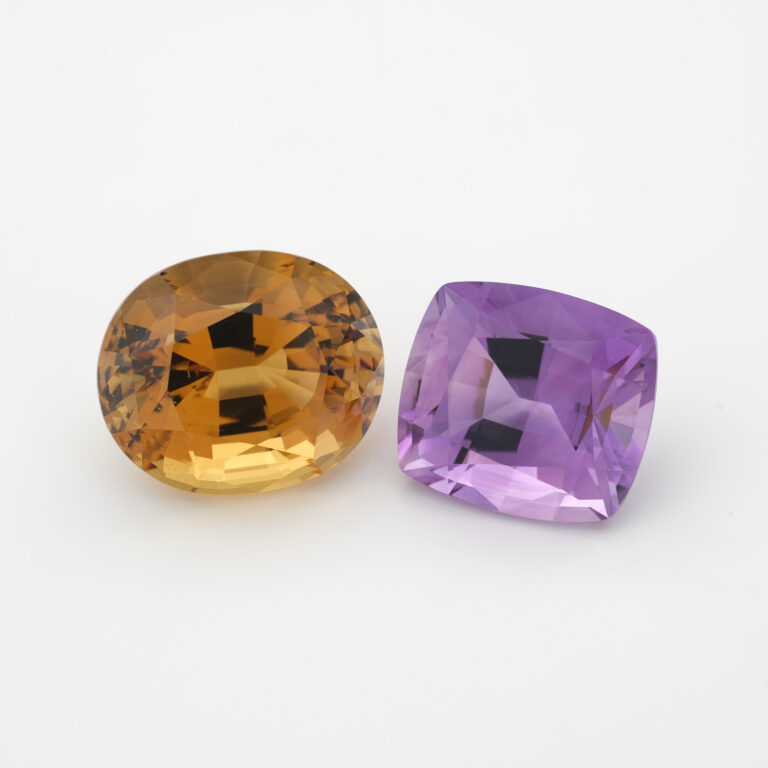
Amethyst and Citrine their Formation and Metaphysical Properties
Amethyst and citrine, two dazzling varieties of quartz, have captured human imagination for centuries. Their vibrant colors—amethyst’s deep purples and citrine’s sunny yellows—make them some of the most beloved gemstones in the world. But what makes these stones so special is not just their beauty, but also the fascinating story of how they form and the meanings they hold.
As members of the quartz family, amethyst and citrine share the same fundamental mineral composition but differ in color due to variations in their formation processes. Both gemstones originate deep within the Earth, where volcanic activity creates hollow pockets in rock. These natural cavities, often filled with water or gas, create the ideal environment for quartz crystals to grow over thousands, or even millions, of years.
The differences between amethyst and citrine begin with how iron interacts within their crystal structures. Amethyst owes its stunning violet shades to trace amounts of iron that oxidize under the influence of natural radiation from nearby rocks. Citrine, by contrast, gets its golden-yellow to amber hues from a different oxidation process involving the same iron impurities.
Interestingly, temperature also plays a key role in determining the appearance of these gemstones. Cooler conditions tend to produce the rich, vibrant purples of amethyst, while warmer environments encourage the formation of citrine’s sunny tones. In some cases, the process overlaps, resulting in ametrine—a unique gemstone that combines both amethyst and citrine in one striking crystal.
Many of the most famous deposits of these stones are found in Brazil and Uruguay, where massive quartz geodes, containing dazzling crystals of both varieties, have been discovered. These natural wonders showcase not only the geological diversity of quartz but also its artistic beauty.
While amethyst and citrine are prized for their physical allure, their metaphysical properties add another layer to their appeal. Amethyst, often called the “stone of peace,” is said to promote calmness, enhance meditation, and encourage spiritual awareness. Associated with the crown chakra, it is believed to bring clarity of thought, dispel negativity, and help foster emotional balance.
Citrine, on the other hand, is known as the “stone of abundance.” It radiates a warm, uplifting energy that is thought to inspire creativity, boost confidence, and attract prosperity. Linked to the solar plexus chakra, citrine is celebrated for its ability to clear energy blockages and enhance motivation. Together, amethyst and citrine represent a perfect balance: calm and vitality, introspection and action.
This duality is especially evident in their raw, unpolished forms, where their contrasting colors stand side by side, creating a powerful visual representation of their complementary energies.

Whether worn as jewelry, displayed as a specimen, or kept as a talisman, amethyst and citrine continue to enchant and inspire with their natural elegance and symbolic meanings.
Ultimately, these gemstones are more than just beautiful minerals—they are a testament to the quartz family’s incredible diversity and the Earth’s ability to create harmony and balance. They remind us of the beauty that exists in both contrast and connection.